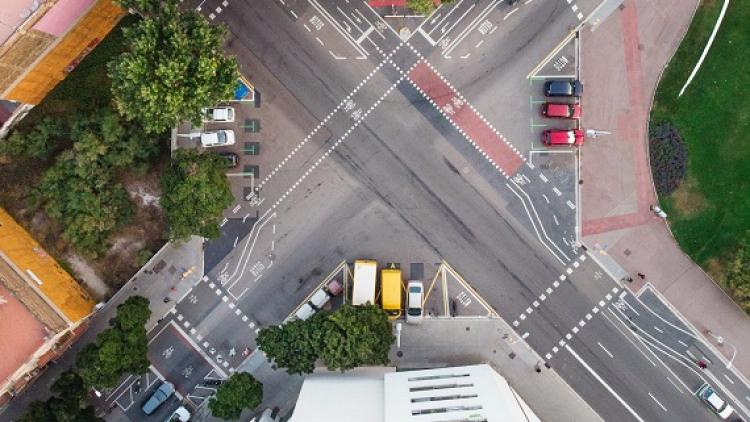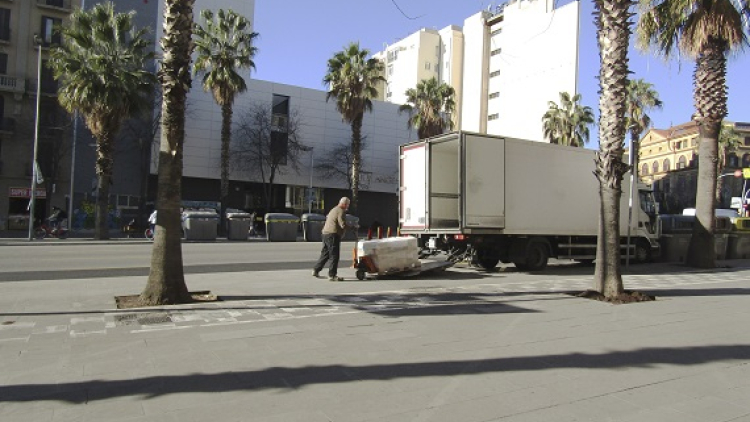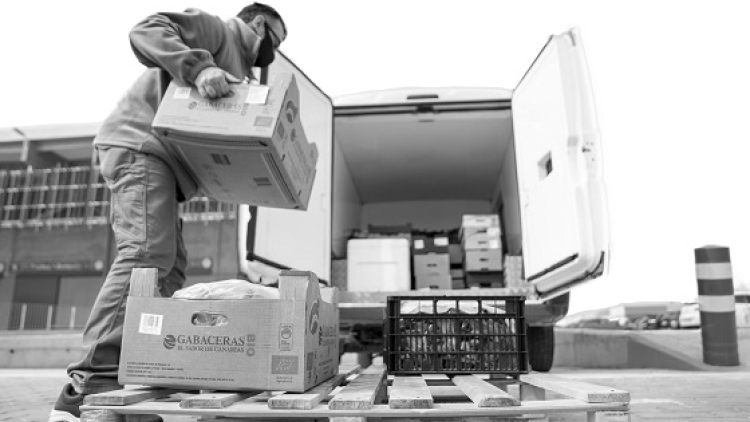Urban Goods Distribution (UGD)
Urban Goods Distribution (UGD) refers to all the flows of goods that take place within the city. It is the final stage of the supply chain in which goods are distributed within the urban area.
UGD makes city life possible and supports and contributes to the development of the local economy. It provides a service to establishments and individual consumers through three different models: the distribution of goods to establishments, the delivery of goods to end consumers and the delivery of services to consumers and establishments.
It is an essential activity for sustaining urban life as it supports the majority of activities and services that take place in the city. What's more, it has an important impact in terms of employment, both within the city and in the metropolitan area.
However, the vans and lorries distributing goods have a notable impact on emissions, noise levels, road safety and occupation of public space, and at the same time they generate a large amount of traffic which is likely to grow sharply due, above all, to new consumption patterns. In the current urban context, improving UGD and its efficiency will enable the mitigation of these impacts.
UGD is also a highly complex activity, with a large number of actors and a diverse range of supply chains. It is mainly carried out through a variety of private agents of varying characteristics but, by and large, the vehicles travel on and carry out loading and unloading operations on the public highway.
Barcelona is promoting the transformation of the city through a new public space model which is intrinsically linked to a new kind of mobility and management of public space, also in relation to UGD.
Related links
- Metropolitan transport authority (ATM in Catalan). Logistics and UGD Open in a new window
- Generalitat de Catalunya - Transport de mercaderies i logística Open in a new window
- Pla de Mobilitat Urbana 2024 Open in a new window
- Pla metropolità urbana (PMMU) de l'AMB Open in a new window
- Pla director de mobilitat de l'ATM Open in a new window
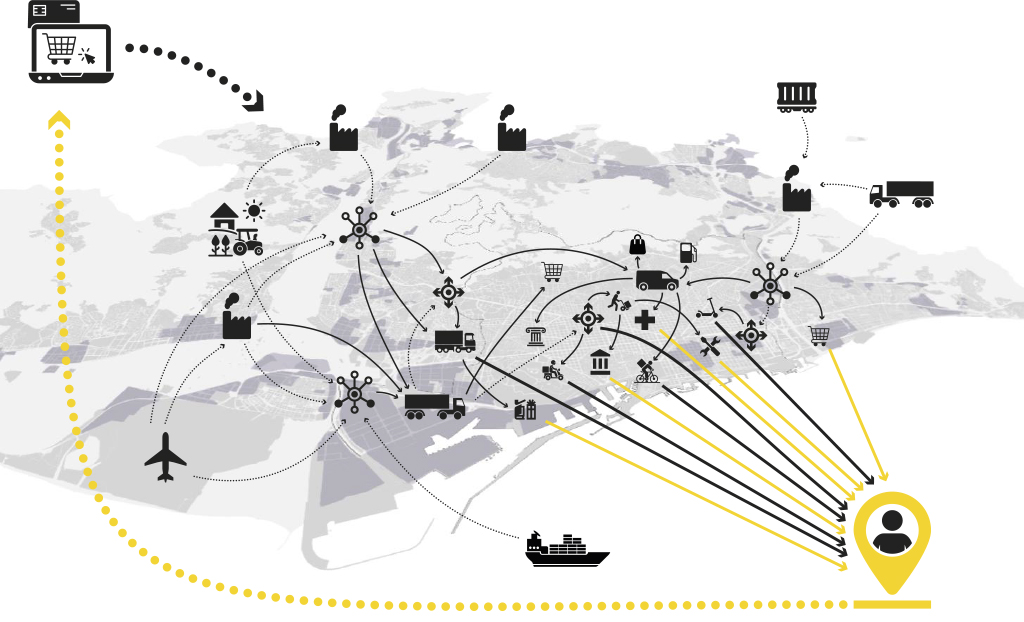
UGD Models
UGD is divided into three broad models according to the type of goods being transported, territorial dynamics, delivery times, frequency of delivery and services offered:
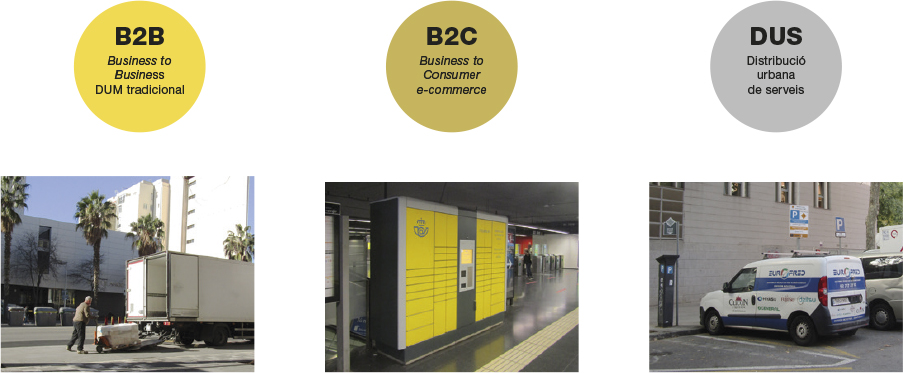
B2B (Business to Business)
Distribution to establishments, is the most widely known and studied UGD model. It includes the delivery of supplies to different types of establishments, such as food stores, hotels and restaurants, large chains in the textile sector and schools and health centres.
B2C (Business to Consumer)
Distribution to the end customer, is the model that includes e-commerce. This model adds a new stage to the distribution chain, known as the ‘last mile’.
USD (Urban Service Delivery)
Is the model that encompasses service provision activities and includes the transport of goods (removals, construction and renovation of buildings, technical assistance, among others). Despite being leass well-known, this model is identified as an important part of urban distribution, particularly with regard to the occupation of public space.
UGD in numbers
Demand and employment
- In the city there are 94,748 establishments that require some 145,000 deliveries per day (2021).
- The city is home to 1.6 million inhabitants who generate around 98,000 e-commerce deliveries per day (2018).
- Between 2018 and 2020 e-commerce in Catalonia grew by 44.6%.
- The logistics sector generates 50,000 jobs in the city (2020).
- It is a highly masculinised sector, as approximately 80% of people working in the sector in the province of Barcelona are men (2020).
Logistics spaces:
- Most of the loading and unloading operations are carried out on the public highway, with a small number carried out at loading bays inside buildings and urban distribution centres (UDCs).
- The city offers around 10,000 loading and unloading bays free of charge (2020). Of these, some 8,500 are located in regulated parking areas and require online validation through the SPRO app, a key tool for managing these spaces.
- The UGD model that occupies that most space on the street is USD, followed by the B2B model and lastly the B2C model.
Externalities
- Vans and lorries account for 23.4% of journey stages in private vehicles in the city, or to put it another way, 17% of vehicle kilometres per year (2018).
- Vans and lorries account for 23% of total Co22 equivalent emissions, 31% of PM10 emissions and 34% of the NOX emissions recorded in Barcelona (2018).
- In 2019, there were a total of 1,566 accidents involving vans and lorries, which resulted in three fatalities, 23 people suffering serious injuries and more than 1,700 minor injuries.
- The use of loading and unloading bays within the regulated parking areas resulted in 150,000 penalty notices for incorrect use of the space (2019).


